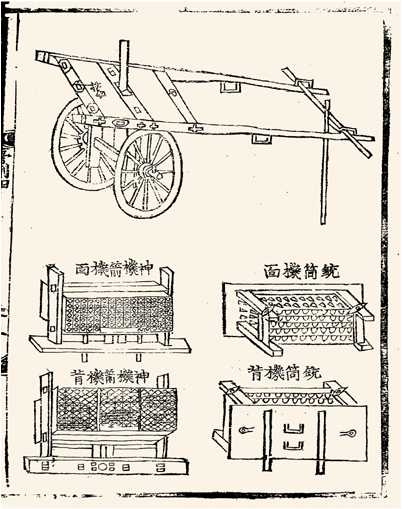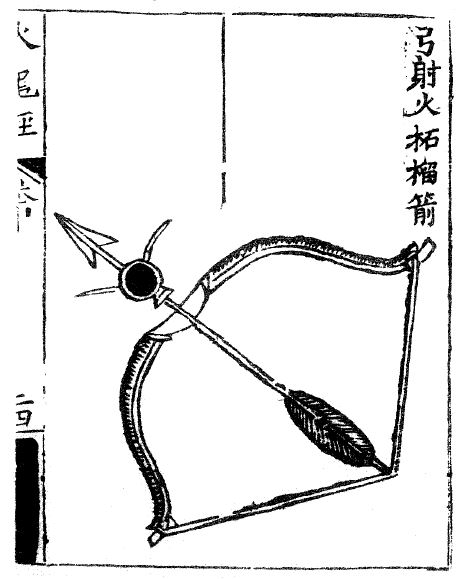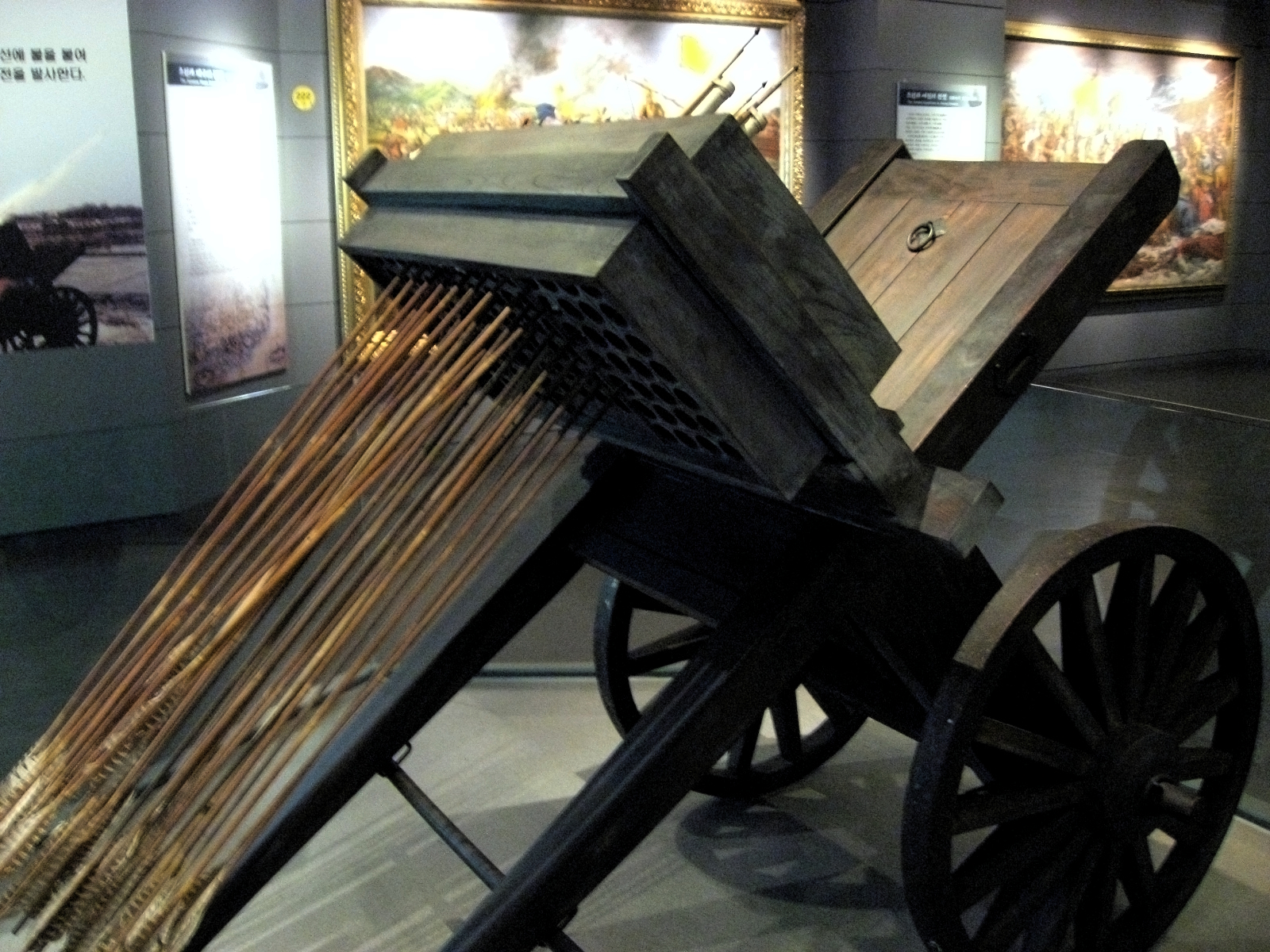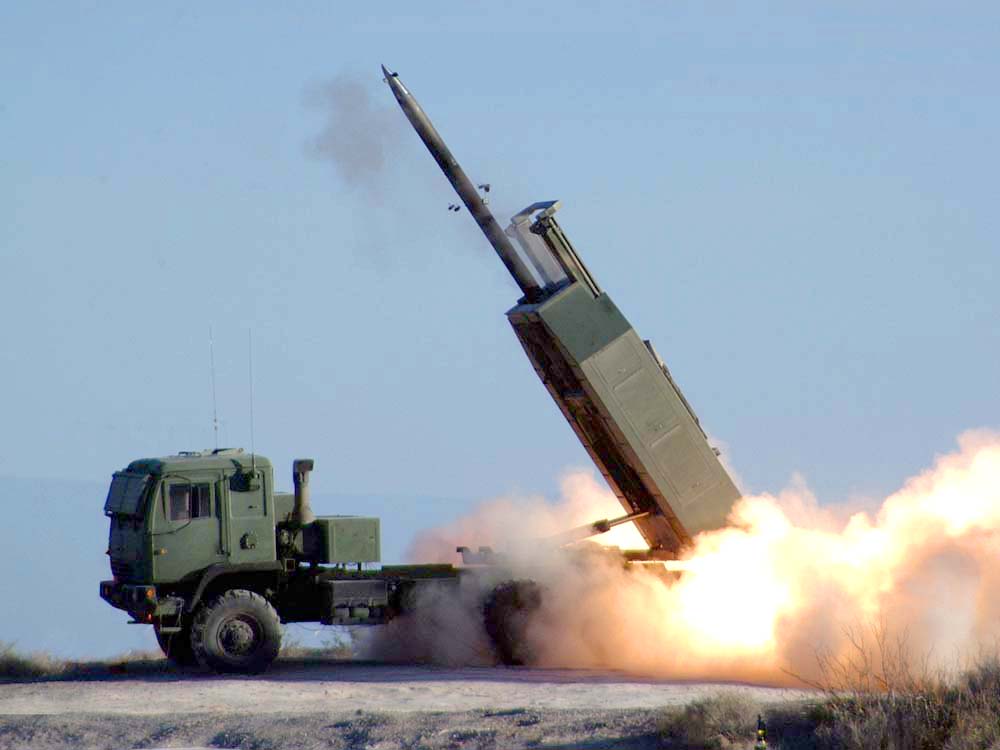|
Hwacha
The ''hwacha'' or ''hwach'a'' () was a multiple rocket launcher and an organ gun of similar design which were developed in fifteenth century Korea. It resembled a wooden cart with a launch pad attached, and it had up to 200 tiny Sin'gijŏn, singijeon arrows propelled by rockets. The former variant fired one or two hundred rocket-powered arrows, while the latter fired several dozen iron-headed arrows or bolts out of gun barrels. The term was used to refer to other war wagons or other cart-based artillery in later periods, such as that developed by Byeon Yijung in the 1590s. These weapons were notably deployed in the defense of the Korean Peninsula against the Japanese when they Japanese invasions of Korea (1592–98), invaded in the 1590s. Some List of historians by area of study#History of Korea, East Asian historians believe this technological breakthrough, alongside the turtle ship in the mid-16th century, had a distinctive effect during the war. Hwachas appear in Korean museu ... [...More Info...] [...Related Items...] OR: [Wikipedia] [Google] [Baidu] |
Fire Arrow
Fire arrows were one of the earliest forms of weaponized gunpowder, being used from the 9th century onward. Not to be confused with earlier incendiary arrow projectiles, the fire arrow was a gunpowder weapon which receives its name from the translated Chinese term ''huǒjiàn'' (火箭), which literally means fire arrow. In China, a 'fire arrow' referred to a gunpowder projectile consisting of a bag of incendiary gunpowder attached to the shaft of an arrow. Fire arrows are the predecessors of fire lances, the first firearm. Later rockets utilizing gunpowder were used to provide arrows with propulsive force and the term ''fire arrow'' became synonymous with rockets in the Chinese language. In other languages such as Sanskrit, 'fire arrow' (''agni astra'') underwent a different semantic shift and became synonymous with 'cannon'. Design Although the fire arrow is most commonly associated with its rocket mechanism, it originally consisted of a pouch of gunpowder attached to an arr ... [...More Info...] [...Related Items...] OR: [Wikipedia] [Google] [Baidu] |
Sin'gijŏn
() was a type of Korean fire arrow rocket, used during the era of the Joseon Dynasty (1392–1897). Multiple ''sin'gijŏn'' could be launched by (multiple rocket launcher). History During the late 14th century, in order to gain ascendancy at sea against Japanese pirates ( or ), fire arrows called () were used, which would become the predecessor of the ''sin'gijŏn''. The Koreans had tried to acquire rockets and gunpowder and their production methods from China. The Chinese, however, regarded the technology of gunpowder as a state secret and restricted access to it and trade in its nitrous raw materials (which could only be found in China). The Koreans therefore sought to acquire the manufacturing secrets of gunpowder for themselves and, in 1374 (–1376), Ch'oe Musŏn was able to bribe a Chinese merchant to obtain the secret formula for manufacturing gunpowder, as well as limited technical knowledge about Chinese firearm and cannon technology. He also successfully extracte ... [...More Info...] [...Related Items...] OR: [Wikipedia] [Google] [Baidu] |
Battle Of Haengju
The Battle of Haengju took place on 14 March 1593 during the Japanese invasions of Korea (1592–1598), 1592–1598 Japanese invasion of Korea. The Japanese attack failed to overcome the fortress Haengjusanseong. Background Gwon Yul was stationed at the fortress Haengjusanseong, a wooden stockade on a cliff over the Han River (Korea), Han River. Haengju posed a threat to Hanseong (modern Seoul and capital of Joseon) due to its proximity, so the Japanese attacked it in March. Battle The Japanese attack led by Konishi Yukinaga happened on 14 March 1593 with 30,000 men. They took turns attacking the stockade due to the limited space. The Koreans retaliated with arrows, cannons, and hwacha. After three attacks, one with siege tower, and one where Ishida Mitsunari was wounded, Ukita Hideie managed to breach the outer defenses and reach the inner wall. However, he was wounded as well and had to fall back. In the last attack Kobayakawa Takakage burned a hole through the fort's log ... [...More Info...] [...Related Items...] OR: [Wikipedia] [Google] [Baidu] |
Multiple Rocket Launcher
A multiple rocket launcher (MRL) or multiple launch rocket system (MLRS) is a type of rocket artillery system that contains multiple rocket launcher, launchers which are fixed to a single weapons platform, platform, and shoots its rocket (weapon), rocket ordnance in a fashion similar to a volley gun. Rockets are self-propelled in flight and have different capabilities than conventional artillery shell (projectile), shells, such as longer effective range, lower recoil, typically considerably higher payload than a similarly sized gun artillery platform, or even carrying multiple warheads. Unguided rocket artillery is notoriously inaccurate and slow to reload compared to gun artillery. A multiple rocket launcher helps compensate for this with its ability to launch multiple rockets in rapid succession, which, coupled with the large blast radius, kill zone of each warhead, can easily deliver saturation fire over a target area. However, modern rockets can use GPS or inertial guidance t ... [...More Info...] [...Related Items...] OR: [Wikipedia] [Google] [Baidu] |
Chongtong
''Chongtong'' () is a term for military firearms of the Goryeo and Joseon dynasties. ''Chongtong'' varied in size from small firearms to large cannons. There were three generations of ''chongtong''. The well-known ''cheonja'', ''jija'', ''hyeonja'', and ''hwangja'' were named after the first four characters of the Thousand Character Classic in decreasing size, thus making them equivalent to Cannons A, B, C, and D. History Gunpowder first came to Korea in the mid-14th century. From 1356 onwards, Korea was much harassed by wokou, and the king of Goryeo, Kongmin Wang, sent an envoy to the court of Ming China appealing for a supply of firearms. Although China at that time was under Yuan dynasty, the first Ming leader, the Hongwu Emperor, seems to have treated the request kindly and responded in some measure. The Goryeosa mentions a certain type of bombard, the chongtong, which could send arrows from the Nam-kang hill to the south of the Sun-ch’on Sa temple with such force and vel ... [...More Info...] [...Related Items...] OR: [Wikipedia] [Google] [Baidu] |
Goryeo
Goryeo (; ) was a Korean state founded in 918, during a time of national division called the Later Three Kingdoms period, that unified and ruled the Korea, Korean Peninsula until the establishment of Joseon in 1392. Goryeo achieved what has been called a "true national unification" by Korean historians as it not only unified the Later Three Kingdoms but also incorporated much of the ruling class of the northern kingdom of Balhae, who had origins in Goguryeo of the earlier Three Kingdoms of Korea. According to Korean historians, it was during the Goryeo period that the individual identities of Goguryeo, Baekje and Silla were successfully merged into a single entity that became the basis of the modern-day Koreans, Korean identity. The name "Korea" is derived from the name of Goryeo, also romanized as Koryŏ, which was first used in the early 5th century by Goguryeo; Goryeo was a successor state to Later Goguryeo and Goguryeo. Throughout its existence, Goryeo, alongside Unified S ... [...More Info...] [...Related Items...] OR: [Wikipedia] [Google] [Baidu] |
Turtle Ship
A turtle ship (; ) was a type of warship that was used by the Korean Joseon Navy from the early 15th century up until the 19th century. They were used alongside the panokseon warships in the fight against invading Japanese fleets. The ship's name derives from its covering that was said to resemble a turtle shell. Some historians have described it as a very early type of ironclad though the historical evidence for this is uncertain. History The first references to older, first-generation turtle ships, known as ''gwiseon'' (, ), come from 1413 and 1415 records in the ''Annals of the Joseon Dynasty'', which mention a mock battle between a ''gwiseon'' and a Japanese warship. However, these early turtle ships soon fell out of use as Korea's naval preparedness decreased during a long period of relative peace. Turtle ships participated in the war against Naval history of Japan, Japanese naval forces supporting Toyotomi Hideyoshi's attempts to Japanese invasions of Korea (1592–98), con ... [...More Info...] [...Related Items...] OR: [Wikipedia] [Google] [Baidu] |
Japanese Invasions Of Korea (1592–98)
The Imjin War () was a series of two Japanese invasions of Korea: an initial invasion in 1592 also individually called the "Imjin War", a brief truce in 1596, and a second invasion in 1597 called the Chŏngyu War (). The conflict ended in 1598 with the withdrawal of Japanese forces from the Korean Peninsula after a military stalemate in Korea's southern provinces. The invasions were launched by Toyotomi Hideyoshi with the intent of conquering the Korean Peninsula and China proper, which were ruled by the Joseon and Ming dynasties, respectively. Japan quickly succeeded in occupying large portions of the Korean Peninsula, but the contribution of reinforcements by the Ming, "(Korean) war minister Yi Hang-bok pointed out that assistance from China was the only way Korea could survive." as well as the disruption of Japanese supply fleets along the western and southern coasts by the Joseon Navy, "His naval victories were to prove decisive in the Japanese defeat, although Yi was to ... [...More Info...] [...Related Items...] OR: [Wikipedia] [Google] [Baidu] |
Korean Cannon
Cannons appeared in Korea by the mid 14th century during the Goryeo dynasty and quickly proliferated as naval and fortress-defense weapons. Major developments occurred throughout the 15th century, including the introduction of large siege mortars as well as major improvements that drastically increased range, power, and accuracy. The Imjin War in the 1590s marked the beginning of a Korean military revolution which saw improvements in cannon design and the introduction and adaptation of foreign-based firearms. This included the ''en masse'' adoption of muskets and the adoption of volley fire and rigorous drill techniques. Breech-loading swivel guns were particularly popular as light anti-personnel artillery. In the early 17th century, a Culverin called Hongyipao was introduced and used until the 19th century. With the rising threat of European powers in the 19th century, the Joseon dynasty made attempts at reverse-engineering European firearms but eventually had to simply buy the ... [...More Info...] [...Related Items...] OR: [Wikipedia] [Google] [Baidu] |
Organ Gun
A ribauldequin, also known as a rabauld, randy, ribault, ribaudkin, infernal machine or organ gun, was a late medieval volley gun with many small-caliber iron barrels set up parallel on a platform, in use in medieval and early modern Europe during the Renaissance period. The name ''organ gun'' comes from the resemblance of the multiple barrels to a pipe organ. When the gun was fired, multiple barrels discharged their projectiles at once, yielding a much higher rate of fire than single-barrel (typically larger-caliber) guns. Organ guns were lighter and more mobile than most previous artillery pieces, making them more suitable for engaging enemy personnel rather than fixed fortifications such as castles. As an early type of multiple-barrel firearm, the ribauldequin is sometimes considered the predecessor of the 19th century mitrailleuse. History The first known ribauldequin was used by the army of Edward III of England in 1339 in France during the Hundred Years' War. Edward's r ... [...More Info...] [...Related Items...] OR: [Wikipedia] [Google] [Baidu] |
Samurai
The samurai () were members of the warrior class in Japan. They were originally provincial warriors who came from wealthy landowning families who could afford to train their men to be mounted archers. In the 8th century AD, the imperial court downsized the national army and delegated the security of the countryside to these privately trained warriors. Eventually the samurai clans grew so powerful that they became the ''de facto'' rulers of the country. In the aftermath of the Gempei War (1180-1185), Japan formally passed into military rule with the founding of the first shogunate. The status of samurai became heredity by the mid-eleventh century. By the start of the Edo period, the shogun had disbanded the warrior-monk orders and peasant conscript system, leaving the samurai as the only men in the country permitted to carry weapons at all times. Because the Edo period was a time of peace, many samurai neglected their warrior training and focused on peacetime activities such as a ... [...More Info...] [...Related Items...] OR: [Wikipedia] [Google] [Baidu] |










